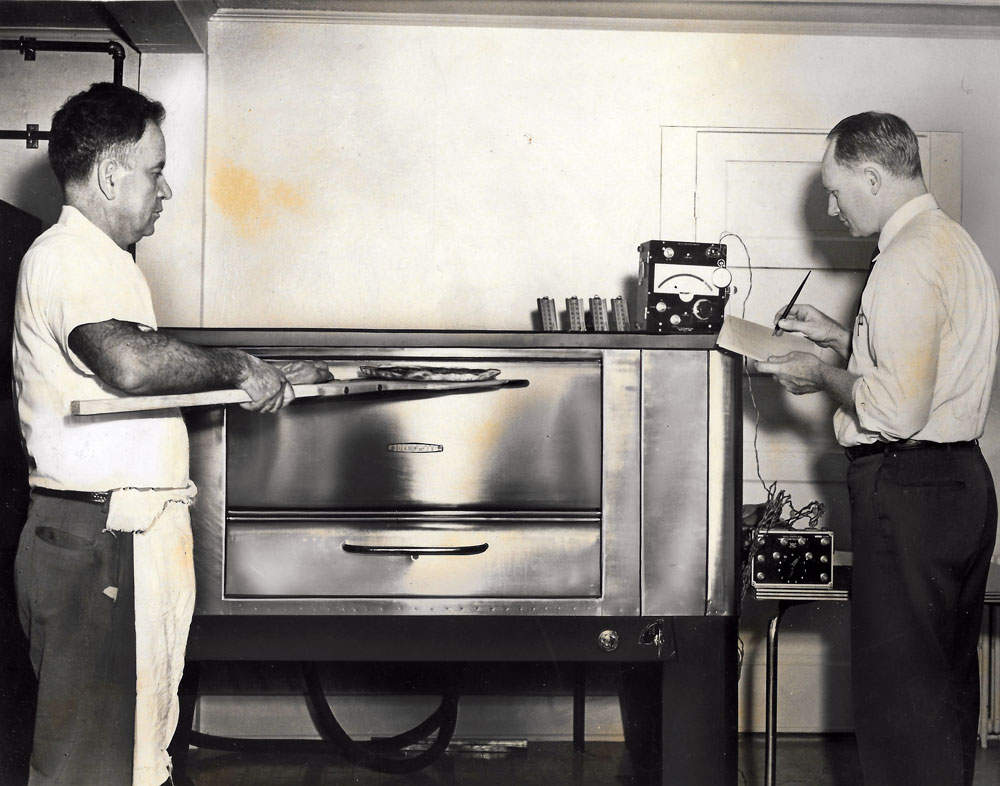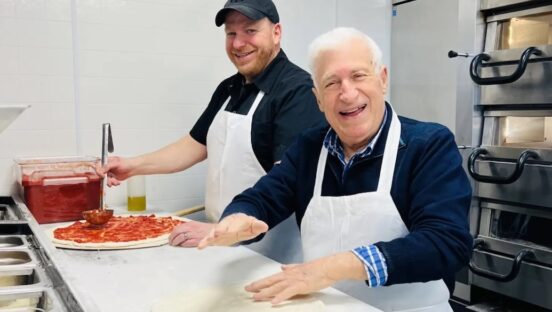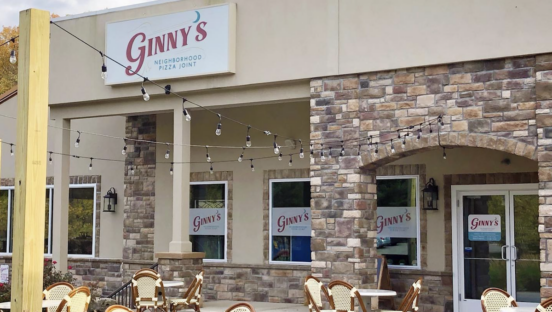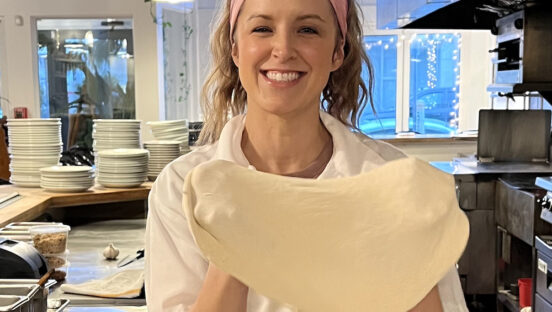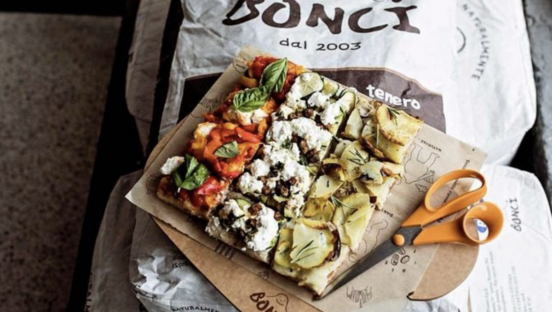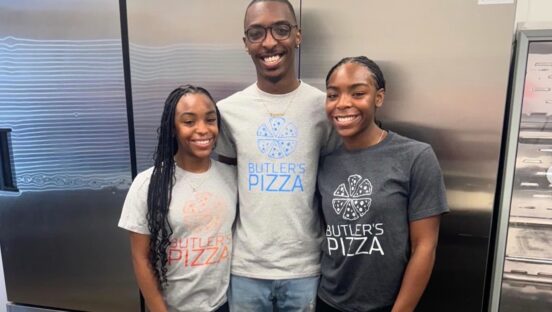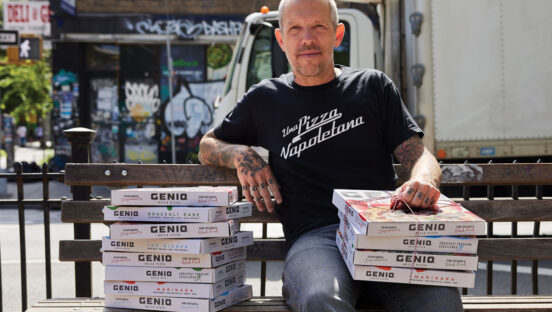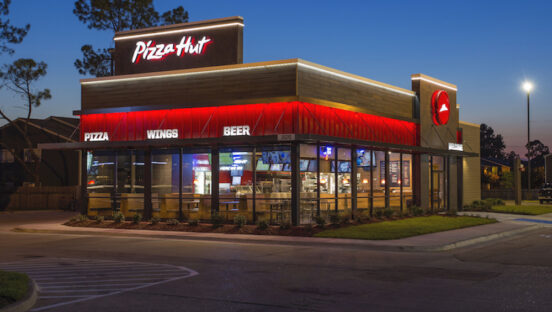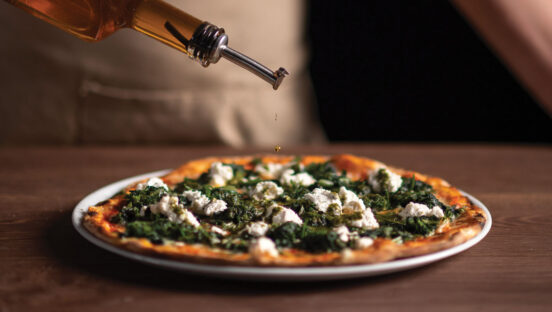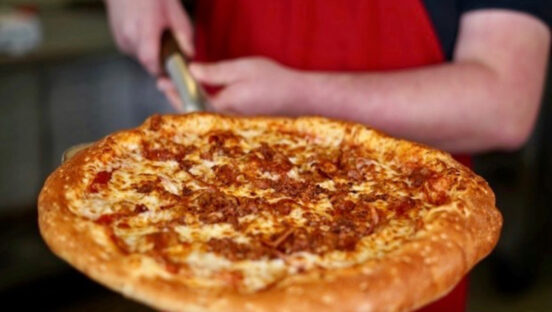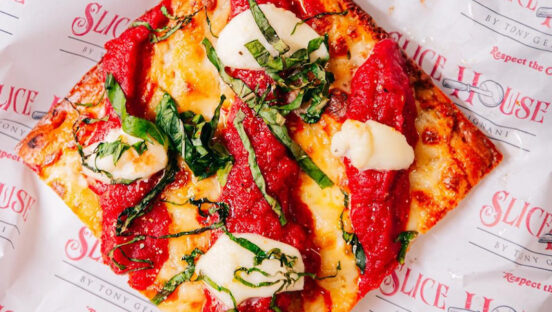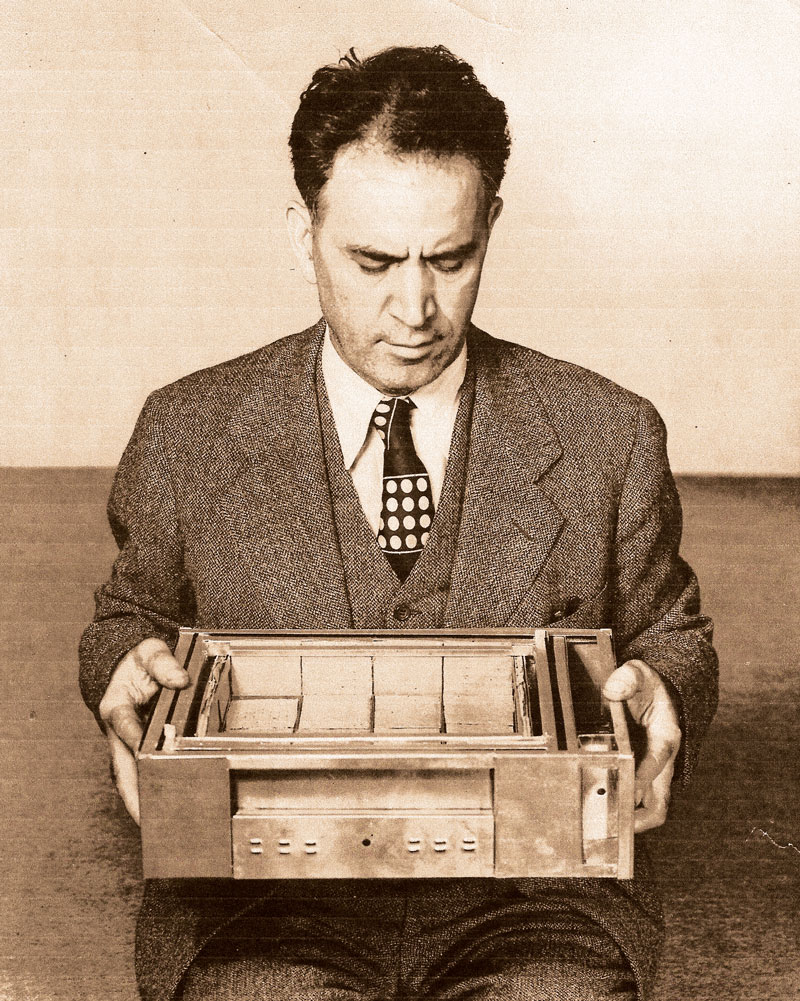
This article was originally published in the August 2016 issue of PMQ Pizza Magazine. Click here to view it in our digital edition.
By Rick Hynum
He was the Johnny Appleseed of New York pizza, a business genius and visionary who helped countless Italian-American restaurateurs open their first pizzerias and survive the Great Depression. He’s even credited with inventing the modern gas-fired pizza oven and the pizza box. He should be an industry icon. Instead, his name has been all but lost to history.
Who was Frank Mastro? And why don’t we remember him?
The story of Mastro and his equally innovative son, Vinnie, is a long, complicated one, And it doesn’t end happily, says Vincent Mastro, son of Vinnie and grandson of Frank. “It’s an extraordinary story of family, creativity, unbelievable insight and foresight—and also sadness,” Vincent says. “These are people who started a family business, worked hard, and pursued opportunity and the American dream. The whole family was involved, everyone working hard for a common goal. Then a series of tragedies struck.”
It’s a tale of ambition, originality and altruism, but also of disease, depression and alleged corporate sabotage. It stretches from the First World War through the Eisenhower years and the Great Northeast Blackout of 1965. And it hasn’t been told in a long, long time…until now.
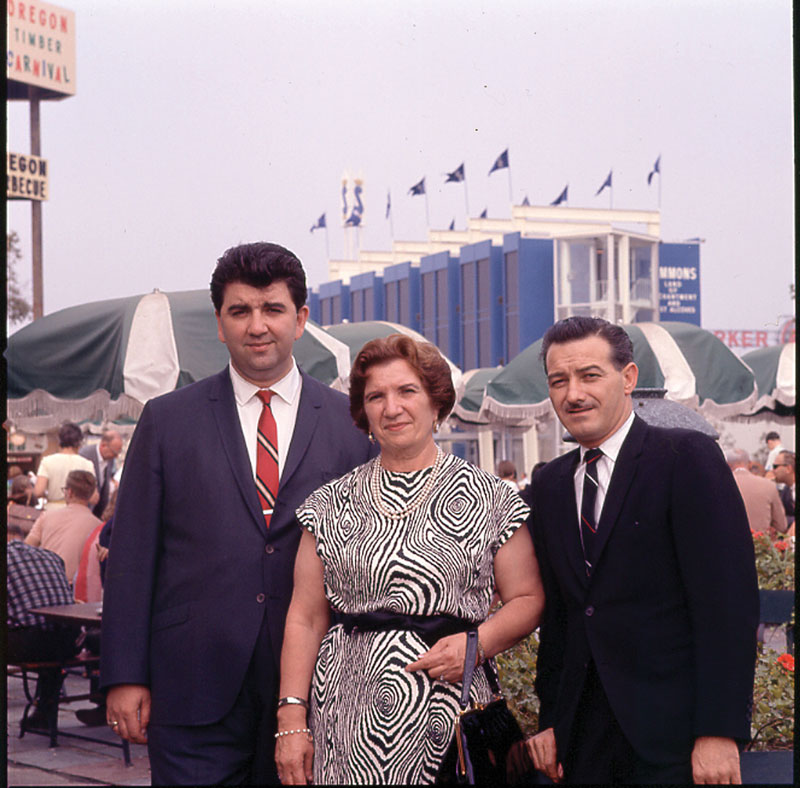 |
|
Vinnie Mastro, shown here with his mother, Grace, and an official with the New York World’s Fair, took over the family business after his father’s death. |
From Silent Films to Pizza
Born in 1897 in Corato, Italy, Frank Mastro immigrated to the United States with his family in 1907. At 16, he lied about his age to get into the Army and served in a field artillery unit during World War I. “He loved the Army,” recalls Frank’s daughter, Madeline Mastro Ferrentino, now living in New Jersey. “At one point, he was stationed in San Antonio, and he would go out and round up wild horses and train them for the Army. He was a very good horseman.”
He was also a born wheeler-dealer. After the war, he married his wife, Grace, and ran a silent movie house, then opened a china shop, peddling dinnerware to restaurants—and here he discovered his niche. From his storefront in the Bowery area of Manhattan, he was soon peddling everything from pans and paper goods to used ovens. “He would buy equipment from restaurants that had closed and would resell it in his store,” Ferrentino says. “One day, he bought a used coal-fired bakery oven and got the idea to put a gas line in it and started experimenting with making pizza, and it worked.”
In the late 1920s, hardly anyone outside of the country’s Italian-American communities had even heard of pizza. But thanks to Frank Mastro, that was about to change.
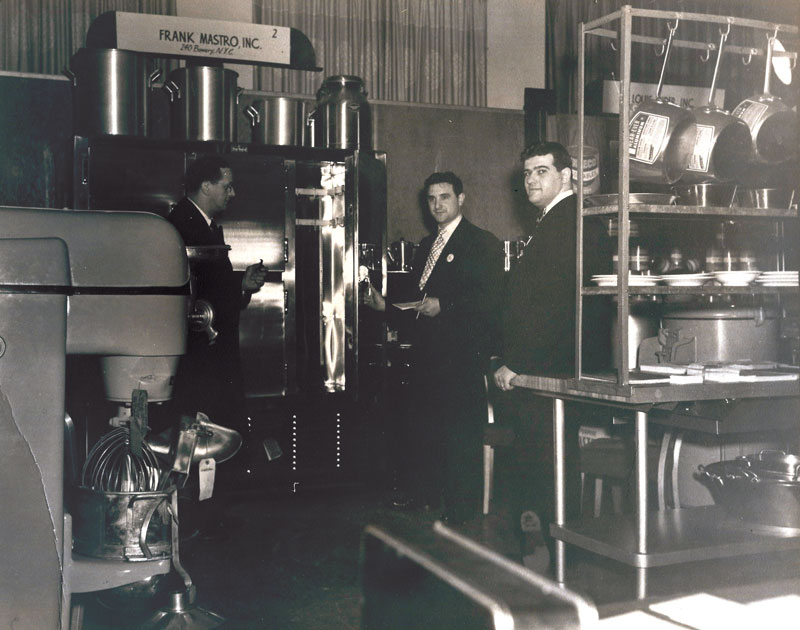 |
|
The popularity of the Mastro pizza ovens spread as the family exhibited them at hospitality industry events, such as the New York City Hotel Show.
|
“Give Me Your Key, and I’ll Do Everything”
Mastro was convinced of two things: Pizza had the potential to take America by storm, but coal-fired ovens of the period weren’t feasible for producing pizza in large quantities. They filled too much space, required constant attention and took hours to heat up to baking temperature. A gas-fired deck oven, Mastro reasoned, would change everything, making it possible to bake multiple pizzas at once and even churn out one pie every minute.
The young salesman designed two ovens: one gas-fired oven for restaurants and a smaller electric one for taverns. All he needed was a manufacturer, so he took his designs to G.S. Blodgett Company. “He had to work to convince them to make it,” Ferrentino says, “but as soon as he started buying the ovens from them and they saw he was getting them sold, they were open to making more.”
Some Italian restaurateurs didn’t bite, however, until Mastro hit upon another brainstorm: a model pizzeria, right there in the Bowery, to show his high-tech ovens in action. Every buyer of a Mastro oven received detailed instructions for achieving the perfect bake, an education on planning and designing a successful pizzeria, and free setup and installation of the equipment. As the Depression set in, Mastro even offered financing to help customers get their businesses off the ground. “He would say, ‘Give me your key, and I’ll do everything,’ and that’s what he did,” his daughter remembers. “If he trusted the people, they didn’t have to put anything down [when financing the equipment]. He went through all of the red tape for them, too, including getting beer and wine licenses.”
Mastro made a good living, but that wasn’t his only goal. “My father did all this purposefully to help Italians who were suffering during the Depression,” Ferrentino says. “They were suffering so much because they had such big families. I remember my father speaking to the men on the Bowery who were in the business, and their primary focus was to get the country working and to get us out of the Depression. Pizza was one of the cheapest foods you could make, so that’s why he chose it.”
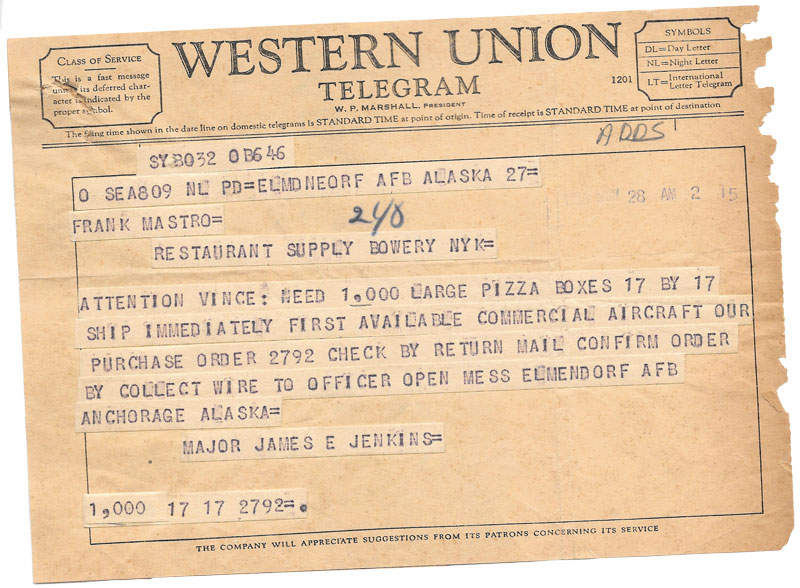 |
|
Although it’s hard to prove, Madeline Ferrentino believes her dad, Frank Mastro, introduced the folding pizza box to the industry. He certainly ordered a lot of them for his customers, as these old documents attest. |
Pioneering the Pizza Box
Mastro reportedly sold more than 3,000 pizza ovens between 1938 and 1953. Dubbed the “Pizza King” by the media, he became an industry celebrity, profiled in publications like Restaurant Equipment Dealer, Cooking for Profit and the Miami Herald and featured on Mr. Executive on New York’s WABD-TV in 1955. To spark more sales, Mastro opened his own pizzerias in certain neighborhoods to prove the concept, then sold them off, “breaking even on the property, but way ahead in terms of reputation and goodwill—and new business,” as he explained to Restaurant Equipment Dealer.
He continued to fine-tune his pizza ovens, but that wasn’t his only innovation. Ferrentino believes her dad invented the pizza box, too. “He sold so much white craft paper and string—that’s what they used for takeout,” she says. “So he asked his manufacturers to make these cardboard pizza boxes. He had a hard time getting someone to make them. But he was always listening to his customers—they’d ask if this or that was available, and if it wasn’t, he’d try to get it made.”
Meanwhile, Mastro groomed his three kids, including Ferrentino, son Vinnie and daughter Mary, to run the business. Ferrentino attended Trinity College during WWII and planned to become an attorney “because the company needed one so badly,” she says. “But my counselor told me, ‘Madeline, you’re a woman, and it’s going to be harder for you to practice. You’ll have to be overqualified.’” She married and moved away instead. Fortunately, her brother, Vinnie, soon proved he had his father’s head for business.
 |
|
Frank Mastro continued to fine-tune his oven designs until he died in 1957. |
The Prince Takes Over
At the height of his success, Frank Mastro fell ill with lip cancer. Through the power of his gas ovens and other innovations, he had spread pizza to all five New York boroughs and other major cities along the eastern seaboard. “He was definitely a genius, but he was such a regular, wonderful person,” Ferrentino says, fondly.
When Mastro died in 1957, obituaries for the 60-year-old “Pizza King” ran in newspapers around the country. Fortunately for the company he’d built and dearly loved, a prince waited in the wings: Vinnie Mastro, a visionary in his own right. For starters, Vinnie’s son, Vincent, a Boston-area software professional, believes his dad invented restaurant franchising, although he admits it’s a hard claim to prove. Vinnie certainly pioneered it and took his Pizza Plaza franchise concept nationwide at the 1964-65 World’s Fair in New York.
The fair’s sprawling Mastro Pizza Pavilion sold slices for 25 cents and pies for $2.50, all made with the Mastro family recipe and another stroke of genius: a formula for frozen dough created by Vinnie and his brother-in-law. “Prior to my father, frozen dough was a failure in the food industry,” Vincent says. “However, my uncle, Lino Linteris—my mother’s brother—was a food engineering genius. He was the brains behind Promise margarine, Mrs. Butterworth and other foods. He created some white powder concoction that was put in the flour mix. This powder was the secret to good frozen dough.”
Vinnie Mastro’s main goal at the World’s Fair was to attract buyers for his franchise concept, Pizza Plaza. “He had a platform to introduce the general U.S. population to pizza and also to sell franchises,” Vincent says. Although the timeline is unclear, Vinnie sold about 16 Pizza Plaza franchises in New York and New Jersey, Ferrentino estimates, and Frank Mastro Inc. provided them all with equipment, ovens and frozen dough. Vinnie also secured distribution rights for Schlitz beer east of the Mississippi River and for Pepsi-Cola nationwide, according to Vincent. Even without its brilliant founder, the company was thriving. There was just one problem: Vinnie had earlier contracted rheumatic fever, a complication from strep throat that often led to heart disease if left untreated.
“He’d Rather Die Young”
Vinnie had his first heart attack at 29 but refused to slow down. “There was a lot of pressure on him to stop working and take care of himself so he wouldn’t die,” his son recalls. “It became a point of contention between my mother and father. But he was so driven, and the business was such a part of who he was that he would rather live a life that was real and of some value—and die young—than otherwise. ”
Even after his wife left him, Vinnie kept working, but his second heart attack was a fatal one. In the midst of the Great Northeast Blackout of 1965, as New York state plunged into darkness and more than a million people found themselves trapped in subways, trains and elevators, Vinnie Mastro’s already weakened heart gave out, and he died in his Queens apartment at just 33 years old.
But the Mastro family saga was not over yet. Later that same night, thieves broke into Vinnie’s apartment and then hit the company’s Bowery complex. In an apparent case of corporate sabotage, the burglars ransacked all of the buildings and made off with countless important documents, including contracts and paperwork related to recent deals, plus a large sum of cash for the purchase of additional restaurant equipment. They also stole Vinnie’s attaché case, which contained numerous important papers. “Of course, the legal papers were always done in triplicate, but whoever came into our buildings had trashed all of the files in our office—looking for [the copies], I believe,” Ferrentino says. “It was an inside job, we’re sure.”
The burglars’ identities and the exact reason behind the break-ins remain a mystery. But one thing was certain: Just a few months after the World’s Fair exhibition had showcased the Mastro pizza empire to the world, that empire was now doomed. Having lost her husband and her only son in just eight years, Grace Mastro, the family matriarch, and daughter Mary fell into a deep, black depression. “I had attempted to get help in going through [the trashed company documents] to look for duplicates, but I was unable to, because of my mother’s and sister’s emotional state,” Ferrentino says. “My mother said, ‘I lost my husband, and I lost my son; I don’t care if I lose my business.’”
Vinnie Mastro had not left a will, and his plans for the company’s growth had vanished with the stolen documents. With various family members sharing ownership in the company’s multiple holdings, piecing together the paperwork again and navigating the legalities would have been time-consuming, expensive and stressful. Ferrentino’s own husband, Ed, who managed a factory with 1,000-plus employees, could have stepped in to run the business, Ferrentino admits. “But given ongoing events and the legal issues that would be involved in sorting out and untangling my mother’s and my sister-in-law’s interests in the company, I felt it was too risky for him to do it,” she says. “I walked away, and I’ve always felt guilty for abandoning my father’s work.”
The Mastro family story has all the makings of a fascinating feature documentary—a business genius and his equally brilliant son help create a billion-dollar industry, only to be cut down in their prime by illness while mysterious thieves plunder the company’s secrets, never to be caught. “Their story is worthy of a documentary,” Ferrentino says. “Their vision, inventiveness and dedication were extraordinary. And their early deaths made a huge difference in the lives of our family. My aunt said at the time, ‘The whole world blacked out for my brother,’ and it certainly did for us.”
But, whether the Mastro family name is remembered or not, its legacy lives on in every mom-and-pop pizzeria in the country. Frank Mastro would be proud, his daughter believes, although not surprised. “My father used to say that pizza would become as popular as the hot dog,” Ferrentino says. “Of course, I believed anything my father said, but nobody else believed him. Now I say to my father in my mind, ‘Do you see, Dad? You were right. What you told me would happen really happened.’”
Recipe: John Scotti’s Homemade Pizza
In a 1958 article in Newsday, Frank Mastro, founder of Frank Mastro, Inc. and inventor of the gas-fired pizza oven, said new pizzerias were opening at a rate of 100 per week across the United States. For home chefs interested in trying pizza for the first time, Mastro’s head chef, John Scotti, shared the following recipe for a basic cheese pie:
Pizza dough:
Dissolve ¼ oz. yeast in 8 oz. water. Add 1 oz. salt. Combine with 11 oz. flour. Knead into dough ball and let stand, covered, for 1½ hours until dough rises. Knead dough for a while, then let rise again for 1 hour. Roll dough into flat crust and place in oiled 15” pizza pan.
Pizza recipe:
Top crust with 16 oz. grated mozzarella cheese and 1 c. plus 1 oz. of pizza sauce. Sprinkle with pinch of oregano, some grated Romano cheese and a small amount of olive oil. Bake at 450° for 5 minutes until crust is brown. Yields 8 slices.
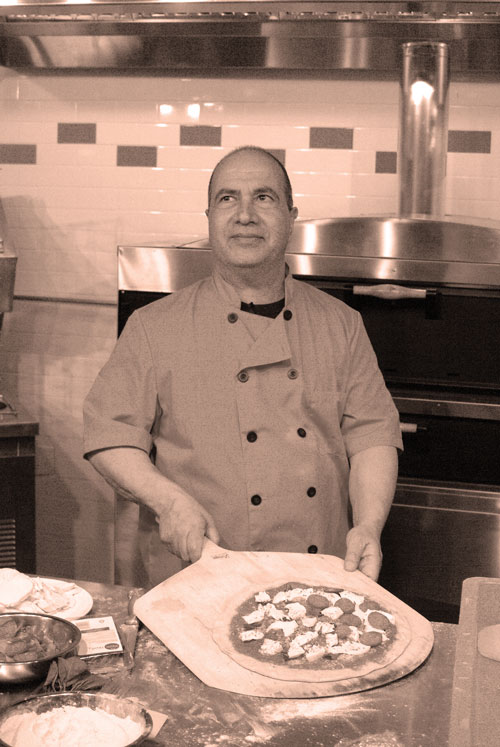
The Mastro-John Arena Connection |
| John Arena, co-owner of Metro Pizza in Las Vegas, says the Mastros helped his family get started in the pizza business: “My family had been bread bakers and owned an espresso bar,” Arena recalls. “Vinnie Mastro helped them open their own pizzeria, providing design, equipment, food supplies, training and operational guidance. Vinnie even helped to arrange financing. The concept was a rudimentary form of franchising, primarily set up to help families who wanted to get started as pizza operators. Although my family had been in the foodservice industry, we would not have been in the pizza business without the Mastros and their Pizza Plaza concept. It’s about time someone told their story and gave them credit for their contributions, vision and structure.” |
|
Mastro’s Homemade Pizza Pie |

